#columba icons
Text




secret project im working on with the mages
10 notes
·
View notes
Text
Loch Ness Monster: A Theory or Real?
The Loch Ness Monster is a modern legend that has gone by decades. The Loch Ness Monster is a creature in Scottish folklore that is said to inhabit Loch Ness in the Scottish Highlands. The legend of the Loch Ness Monster, also known as Nessie, was born on May 2, 1933 when a couple reported to have seen an enormous creature that “was rolling and plunging on the surface.” After this reporting, the mysterious creature was brought to worldwide attention. Since the reporting in 1933, numerous sightings of the creature have been reported. In December of 1933, a man named Marmaduke Wetherell, a hunter, was sent to locate the sea serpent. Upon his search, he ended up finding large footprints. However, zoologists have later stated these footprints were not caused by any large sea serpent and were most likely created by someone.
Reports of “Nessie” actually go back as early as the sixth century AD. Adomnán wrote about some events that had happened some years prior. He wrote that a monk, Saint Columba, was staying with others in a town. There they encountered residents burying a man. The residents explained that the man was attacked and killed by a “water beast.” Saint Columba sent a follower to swim across the River Ness. There, the follower encountered the beast but when he did the sign of the cross, the beast fled. Saint Columba and his companions perceived this encounter as a miracle.

In 1934, Robert Kenneth Wilson, captured the most iconic and well known picture (shown above) that there is of “Nessie” today. The Daily Mail even ended up printing the picture which soon sparked international interest in this sea serpent. Many people even speculated the creature was a marine reptile that went extinct over 65 million years ago. Over the next couple of years, monster hunters from all over were intrigued by this creature and many explorations were done in search of the Loch Ness Monster but nothing conclusive was found. However, British explorers’ sonars in each expedition detected some large, moving underwater objects.
In 1994, it was revealed that the most iconic picture of the Loch Ness Monster taken by Robert Kenneth Wilson ended up all just being a hoax – the “Nessie” in the picture was actually not some prehistoric marine animal but was just a plastic and wooden head that was attached to a toy submarine.

In 2018, DNA tests were conducted using the water from Loch Ness, where the supposed Loch Ness Monster inhabits. The results ended up coming back that no prehistoric marine animal or other such large animals inhabited the water. The results however did conclude that many large eels lived in the water. After this discovery, many people started to speculate what people were actually seeing was not some prehistoric creature but just some large oversized eel.
To date, there has been no proof of the existence of the Loch Ness Monster. Even with no evidence of this creature, people have still yet to not believe. Steve Feltham, a man who spent three decades watching the Loch Ness for any sighting of the Loch Ness Monster and even kept up a blog. After the joke to raid Area 51, another facebook event was formed – to storm Loch Ness is Scotland. The facebook event for this raid was called ‘Storm Loch Ness, Nessie can’t hide from us all.’ More than 40,000 facebook users expressed interest in joining this raid. Unlike Area 51 however, Loch Ness is open to the public.
17 notes
·
View notes
Text
Your Gps digital Tour manual Is A Garmin 3760Lmt
Sunscreen - nothing can ruin a holiday like bad sunburn. When choosing a sunscreen, try to discover 1 that doubles as bug guard to keep the mosquitoes absent.
For the accurate adventure fanatics. Take the back again street and climb Mount Tarawera. Enter the crater and operate down to the bottom at complete speed. The massive crater was brought on by the 10 June 1886 eruption which destroyed the pink and white terraces and buried many villages.
There is 1 factor that you ought to not skip out on while on a Tasmania tour and that is a go to to the St. Columba falls. There is so a lot much more to this state like the city of Launceston that has a number of attractions like Cataract Gorge and cable hand gliding at Penny Royal World. The southern part of the condition is much better known as the Meander Valley and the main points of interest here are the Trowuna Wildlife Park where you can see Koalas and Tasmanian devils.
Anjuna Flea Market : Among the many tourist places in Goa, the Anjuna Flea Market has turn out to be something of an icon. Held each Wednesday, this market has more than 500 stalls promoting trinkets, vibrant sarongs, artefacts, nearby handicrafts and beachwear. It has arrive a extremely long way because the 1960s and 70s when hippies started the place as a indicates of exchanging their items by way of barter.
One of the initial structures built in NZ solely with tourists in thoughts. Originally constructed as a tub home and hot water therapy center it has now been converted. Good museum but the spotlight is the movie on nearby history, sit down and be sure to be keeping on - a total multimedia encounter. Definite should do. The building itself is 1 of the finest examples of Edwardian style and is an artwork piece in by itself. The encompassing gardens are always nicely maintained.
I keep in mind my first couple of meals in India. We had been in Chennai (Madras) and obtaining utilized to consuming with our (correct!) hand. A waiter took us on as an training venture and showed us just how this is to be done: stay near to your banana leaf, don't tilt your head back, move the meals into your mouth quickly. and don't make a mess. click here stated than carried out!
Camera or video digital camera. Read any kind of Jamaica traveling to indonesia and it will inform you that a camera will be 1 of your most important add-ons. Make the long journey worth it by using pictures and videos of the finest scenery and a style of their local scene. Your friends and family will be excited to see what Jamaica travel appears like so it's good to take as numerous pictures and movies that you can!
Watch and learn. Observe nearby individuals and view where they shop, which eating places they regular, exactly where they go to church or buy groceries. Look for places that have local individuals in them and you will begin to acquire some local know-how.
1 note
·
View note
Photo









like or reblog if you save
#titans#titans icons#titans season 2#titans season two#titans season 2 icons#dick grayson icons#robin icons#brenton thwaites icons#donna troy icons#conor leslie icons#minka kelly icons#columba icons#dawn granger icons#ravena icons#teagan croft icons#starfire icons#starfire#anna diop icons#mutano icons#gar icons#ryan potter icons#jason todd icons#curran walters icons#dc#dc universe#DC comics#dc icons#dc universe icons#icons
247 notes
·
View notes
Photo










dawn granger icons + loki headers
like please
»»— se a header/icon for sua avise —««
#icons columba#columba icons#icons titans#titans#titans packs#packs titans#headers loki#loki headers#loki packs#packs loki#marvel headers#headers marvel#marvel icons#icons marvel#columba headers#headers columba#icons dawn granger#dawn granger icons#dawn granger#dawn granger headers#headers dawn granger
309 notes
·
View notes
Photo









credit to @sassesnach and like if you use/save.
#mandy#icons#dawn granger#dawn granger icons#icons dawn granger#titans#titans icons#dctv#dctv icons#icons dctv#icons titans#dove#dove icons#columba#columba icons#icons columba#icons dove#dc comics#dc comics icons#icons dc#dc icons#sem psd#icons without psd#icons sem psd#dc universe#dc universe icons#icons dc universe
25 notes
·
View notes
Photo






like/reblog or credit dccosmics on twitter if you save/use
#dove#dove icons#dawn granger#dawn granger icons#titans#titans icons#icons#icons without psd#columba#columba icons
42 notes
·
View notes
Text
Folklore Friday: Loch Ness Monster
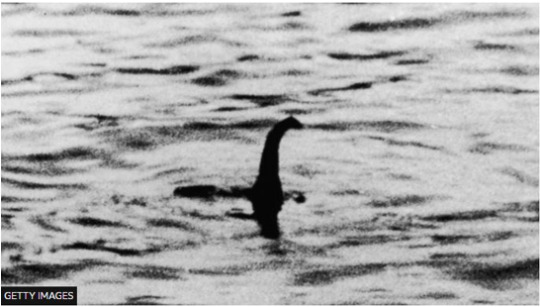
(Later revealed to be a hoax, this photo taken by Robert Kenneth Wilson in 1934 rocked the world as proof of Nessie)
Known and regarded quite fondly in Scotland, today we’re talking about the famous Nessie—or Loch Ness monster.
Nessie has been living in Scotland for centuries—some reports dating back even to ancient times! The first written report is said to have been written around 565 AD, where it bit a swimmer and was about to attack someone else when St. Columba intervened, ordering Nessie to back off, which she obediently did! Before then, an engraving of a strange aquatic creature had been carved into stones near Loch Ness by local Picts (the ancient peoples of North Scotland) However, it wasn’t until 1933 when the legend really took off, and the first modern sighting was reported.
According to the report, a couple spotted a large animal they compared to a “dragon or prehistoric monster” that disappeared into the water. Then later, a hunter named Marmaduke (yes, like the dog) Wetherell found large footprints along the shore, he estimated the animal to be around 20 feet long. Thus, Loch Ness which is almost 800 feet deep and 23 miles long would be the perfect home for such a large creature.
Sightings and stories tell of Nessie being a large, almost dinosaur-shaped monster with fins, a long neck, and a tail. She lives primarily in Loch Ness, but is known to wander around the shore as well. There is even a theory that she is a plesiosaur, a reptile that had gone extinct 65.5 million years ago. If she is such creature but has somehow become immortal, it could explain how reports go back so far in history.
Since the first report there have been numerous photographs, the most iconic being the “surgeon’s photograph” taken by Robert Kenneth Wilson in 1934, as well as sonar explorations in both 1987 and 2003, and a DNA survey of Loch Ness. While no signs of a plesiosaur was found, there were numerous eels living in Loch Ness that could have been confused for a giant marine beast.
Other than the first written report, Nessie isn’t known to be dangerous or harmful, but rather a sweet, gentle creature well loved by those who visit her at Loch Ness. She’s even appeared in several children’s books, and has inspired countless stories and films.
So if you happen to be around Loch Ness in Scotland, maybe watch the water and just wait—you might just see a head poke up over the surface curiously, and if so—give her a friendly wave for me!
Don’t just take my word for it!
Loch Ness monster | History, Sightings, & Facts | Britannica
Loch Ness Monster - Real vs Myth, Location & Lake - HISTORY
Scottish folklore - The Loch Ness Monster | Timberbush Tours (timberbush-tours.co.uk)
Loch Ness Monster may be a giant eel, say scientists - BBC News
#writing#writers#writing inspiration#creative writing#writing community#books#film#filmmaking#screenwriting#creative#folklore Friday#Folklore#paranormal#monsters#magic#ghoststories#myth#loch ness monster#nessie#cryptid#scotland
37 notes
·
View notes
Note
So I love your icon--are they all pigeons? Do you know? Ik there are a bunch of different kinds, or basically the question is can you tell me about your icon picture I'm curious :)
Oh, of course!
My profile picture is taken from an illustration titled "our fancy pigeons" and shows a bunch go domestic breeds of Columba livia (rock/common pigeon).
One of the reasons I love pigeons (and why I study them) is because they present incredible variation within a species, the likes of which we only see in dogs and goldfish, Because of this, Darwin himself chose the diversity of domestic pigeons as the opening scientific example in On The Origin of Species. (I've left a link to an article written by my friends at the Cornell Lab of Ornithology about this exact subject at the bottom of this post)
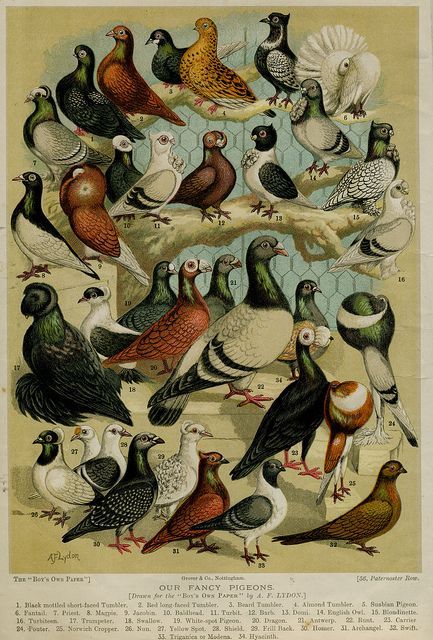
If you want to get a baseline of a "normal" pigeon, Individual 30 in the bottom left corner of this illustration is a racing homer or "homing pigeon" and is usually indistinguishable from a typical wild rock pigeon without the expert eye of an ornithologist or pigeon fancier.
there are some really extreme breeds of pigeon out there, and I can't resist a quick recap, so here are a few pigeon breeds that I think are kinda ridiculous(ly cool!)
Giant Runt (22):
This breed was selected for size, as it is a meat producer (pigeon meat is typically sold as "squab")

(image from https://www.youtube.com/channel/UCX0eLxY-pElI0G0Kf8Zg8UA)
Cropper (24)
bred to have an inflated crop (a part of a bird's digestive system above the stomach) , the cropper pigeon is said to look like a ball on a stick from far away.
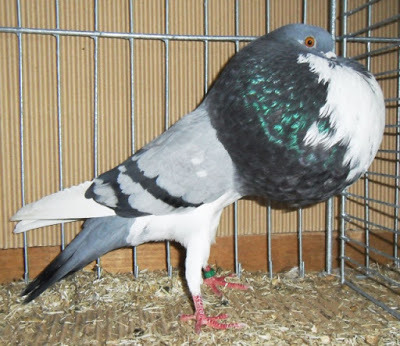
(image from http://pigeons-fall.blogspot.com/2016/09/norwich-cropper-pigeons.html)
Fantail (6)
it's a pigeon with a tail fanned out like a turkey! some specimens also hold their heads down so far the may appear headless, but trust me, they're alright.
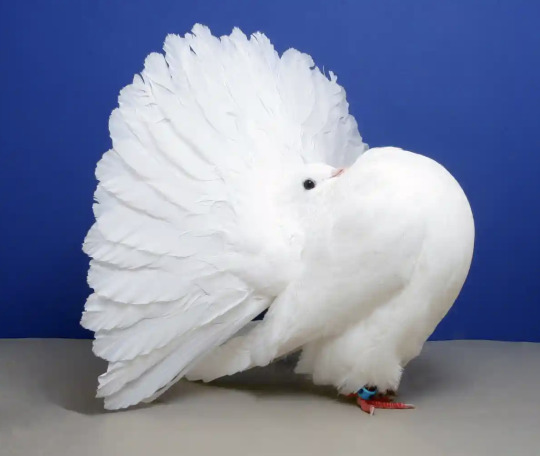
(image from https://www.theguardian.com/environment/2015/feb/27/pigeon-fanciers-brotherhood-breeders-bio-artists)
If you are interested, please go out and explore pigeons breeds on your own!
-Z42
here's the article I promised:
https://www.allaboutbirds.org/news/darwins-other-bird-the-domestic-pigeon/
2 notes
·
View notes
Text
O Euchari (Hildegard von Bingen) sung by Azam Ali
First, a note on the singer who I’ve followed for decades:
Azam Ali (Persian: اعظم علی) is a well-known Iranian singer and musician. Ali has released ten albums with the bands VAS and Niyaz and friends, as well as multiple solo albums.
https://en.wikipedia.org/wiki/Azam_Ali
In this video from summer 2020, she sings a famous song composed by Hildegard von Bingen. Information on the song below, including English translation of the lyrics.
youtube
+++
Azam Ali wrote about this song:
Composed by 12th Century Christian mystic, writer, composer, philosopher, Hildegard Von Bingen, a visionary who left behind a treasure trove of illuminated manuscripts, treatises on theology, medicine, botany, the arts, & above all her extraordinary music.
It is her music & this very song in fact which I heard at the age of 18, that made me want to sing. I was originally going to record this for my 2002 album "Portals of Grace" but settled on another composition of hers.
Hildegard for me is a feminist icon whose contributions to the canon of universal spirituality & mysticism, are immeasurable. Her work transcends centuries & musical, religious/mystical genres. It awakened me to the ancient philosophy of "The Music of the Spheres.” That if the human body is made entirely of elements forged by stars, then indeed we are celestial bodies & the cosmos is within us. If the rotation of heavenly spheres produce tones & harmony, then they must resonate within us. Thus, music in its most sublime form, is our participation in the harmony of the universe. That we may bring some harmony to our souls in our longing to return to our celestial home.
+++
For the Latin lyrics, go to
https://lyricstranslate.com/en/o-euchari-leta-o-st-eucharius.html
which is also the source for this English translation:
1a. O St. Eucharius,
you walked upon the blessed way
when with the Son of God you stayed—
you touched the man
and saw with your own eyes
his miracles.
1b. You loved him perfectly
while your companions trembled,
frightened by their mere humanity,
unable as they were to gaze
entirely upon the good.
2a. But you embraced him in the ardent love
of fullest charity—
you gathered to yourself the bundles of
his sweet commands.
2b. O St. Eucharius,
so deeply blessed you were
when God’s Word drenched you in the fire of the dove
illumined like the dawn
you laid and built upon the Church’s one foundation.
3a. And in your breast
burst forth the light of day—
the gleam in which three tents
upon a marble pillar stand
within the City of our God.
3b. For through your mouth the Church can savor
the wine both old and new—
the cup of sanctity.
4a. Yet in your teaching, too,
the Church embraced her rationality—
her voice cried out above the peaks
to call the hills and woods to be laid low,
to suck upon her breasts.
4b. Now in your crystal voice
pray to the Son of God for this community,
lest it should fail in serving God,
but rather as a living sacrifice
might burn before the altar of our God.
+++
Some of the meaning:
O Euchari, like Columba aspexit, was almost certainly written for the clergy at Trier. Saint Eucharius was a third-century missionary who became the bishop of the city. Stanza one evokes his years as an itinerant preacher (during which he performed miracles). The ‘fellow-travellers’ of stanza two are presumably Valerius and Maternus, his companions in the missionary work. The ‘three shrines’ of stanza five (compare Matthew 17: 4) represent the Trinity and perhaps, if we follow the Glossa Ordinaria, the triple piety of words, thoughts and deeds. The ‘old and the new wine’ of stanza six represent the Testaments: Ecclesia savours both, but the Synagogue, like the ‘old bottles’ of Christ’s parable, cannot sustain the New. Hildegard closes the Sequence with a prayer that the people of Trier may never revert to the paganism in which Eucharius found them, but may always re-enact the redemptive sacrifice of Christ in the form of the Mass.
from notes by Christopher Page © 1982
https://www.hyperion-records.co.uk/dw.asp?dc=W2933_GBAJY8403905
+++

+++
The first version of this song that I heard was on the highly innovative album of Hildegard’s songs arranged with “worldbeat music” by Richard Souther, now an acquaintance. The album is ‘Vision’ and here is that version of the same song:
youtube
I like both versions of the song a great deal, and you’ll find many more on Youtube.
4 notes
·
View notes
Text
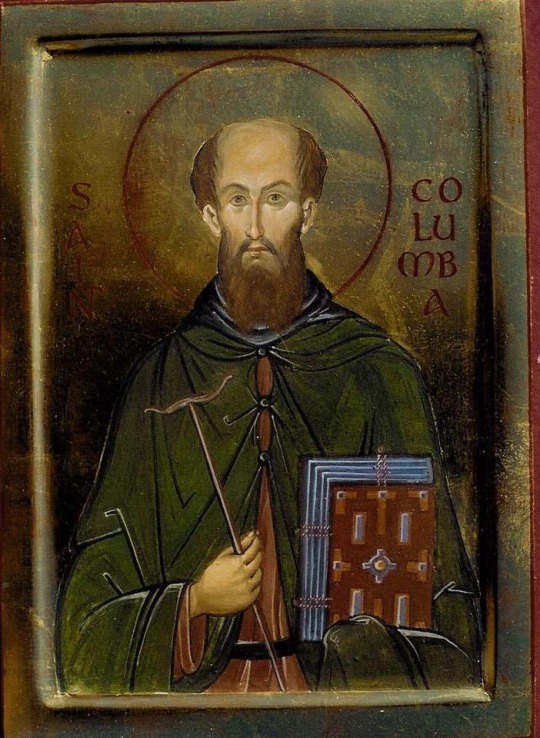
June 9th is the feast of St Columba.
Four holy founders of monasteries came from Scotia (Ireland), to visit St. Columba, and found him in the Hinba island (Eilean-na-Naoimh)….
They all with one consent agreed that St. Columba should consecrate, in their presence in the church, the holy mysteries of the Eucharist.
The saint complied with their express desire, and entered the church with them on Sunday as usual, after the reading of the Gospel….
There, during the celebration of the solemn offices of the Mass, St. Brenden Mocu Alti saw, as he told Comgell and Cainnech afterwards, a ball of fire like a comet burning very brightly on the head of Columba, while he was standing before the altar, and consecrating the holy oblation.
And thus it continued burning and rising upwards like a column, so long as he continued to be engaged in the same most sacred mysteries….
When the saint was living in the Hinba island (Eilean-na-Naoimh), the grace of the Holy Ghost was communicated to him abundantly and unspeakably, and dwelt with him in a wonderful manner….
For three whole days, and as many nights, without either eating or drinking, he allowed no one to approach him, and remained confined in a house which was filled with heavenly brightness.
Yet out of that house, through the chinks of the doors and keyholes, rays of surpassing brilliancy were seen to issue during the night. Certain spiritual songs also, which had never been heard before, he was heard to sing.
He came to see, as he allowed in the presence of a very few afterwards, many secrets hidden from men since the beginning of the world fully revealed; certain very obscure and difficult parts of sacred Scripture also were made quite plain, and clearer than the light to the eye of his pure heart.
Another night also, one of the brothers…came by chance, while the other brothers were asleep, to the gate of the church, and stood there for some time praying.
Then suddenly he saw the whole church filled with a heavenly light, which more quickly than he could tell, flashed like lightning from his gaze. He did not know that St. Columba was praying at that time in the church, and after this sudden appearance of light, he returned home in great alarm.
On the following day the saint called him aside and rebuked him severely, saying: “Take care of one thing, my child, that you do not attempt to spy out and pry too closely into the nature of that heavenly light which was not granted thee, but rather fled from thee, and that thou do not tell any one during my lifetime what thou hast seen.”
Adomnán of Iona (628-704): Life of St. Columba, Book 3, 18, 19, 21; from Life of Saint Columba, Founder of Hy, Written by Adamnan, Ninth Abbot of that Monastery, ed. William Reeves, (Edinburgh: Edmonston and Douglas, 1874) @ Internet Medieval Source Book; icon of St Columba by Aidan Hart.
7 notes
·
View notes
Video
youtube
Happy 60th birthday the multi-talented Richard Jobson.
Jobson was born on April 6th 1960 in Kirkcaldy and grew up in Crosshill near Ballingry in Fife, he went to school at nearby St Columba's High Dunfermline.
At only 17, Jobson first gained success as front-man with the Scottish punk band, The Skids, who had a string of hits in a 2-year period, from 1979 to 1981, the biggest song being the top-10 hit, "Into the Valley" in 1979. The band was formed by Jobson and his friend, Stuart Adamson, Jobson wrote most of the lyrics while Adamson worked on the music.
After Adamson departed the band, The Skids commercially declined and disbanded in 1982. Shortly after, Jobson formed the short-lived band, The Armoury Show and, although not a commercial success, were critically-acclaimed by the music press. This was to be Jobson's last foray as a musician as he turned his attention to modeling for a few years and once claimed he was the highest male earner in the industry.
In the late 1980s Jobson became a presenter on 01 for London and as film reviewer for Sky TV he then went on to write, produce and direct on several projects, including the semi autobiographical 16 years of Alcohol in 2003. He reformed The Skids after Stuart Adamson's suicide for a tribute gig for Adamson on May 31, 2002 in Glasgow and needless to say stole the show.
Richard Jobson currently lives in Berlin and last year was working on a novel, Speed of Life, about aliens and Bowie, and a memoir, called Into the Valley, the title of The Skids biggest hit. He says that The Skids are often overlooked in the great scheme of things and that the band rarely make it into the nations top 50 bands, well Mr Jobson I have three Skids Songs on my phone and when out of the house and wandering I always have my earphones in and regularly enjoy the sounds you and Adamson made together.
The Skids were at the top of their game when Stuart left and were playing Hammersmith Odeon and Glasgow Apollo, iconic venues worthy of gracing any group and I salute you. I am also sure you got a new set of fans when Green Day covered The Saints are coming.......
11 notes
·
View notes
Note
If the Monsterverse does continue after Godzilla vs Kong, how would you handle it moving forward? Would you have an overarching villain/threat or stay on self-contained movies? Would you introduce more extraterrestrial threats besides Ghidorah? Finally, which monster would you pick to get a standalone movie, if any?
So, like, the one successful Cinematic Universe in modern film built up to the idea of having crossovers by establishing a few very different stories within the shared world to show why having the crossover would be a good idea - to show why having these different characters meeting would be interesting. It actually took a long time for there to be an Arch Villain who was also the Arc Villain - i.e. a villain who is the connecting thread of everything. We didn’t build to the Avengers on the back of a villain - we built to them on the back of a mcguffin.
With only three entries to its name, the Monsterverse is, well, roughly where the MCU was three entries in - they’ve established two different (but in some ways very similar) heroes with their own storylines, and built up the first hero’s storyline while introducing some other heroes within it. We don’t quite have a unifying mcguffin yet, and we haven’t had an entry that expands what these stories can be yet. They have established a baseline, a general sense of tone and content. To survive long enough to have several entries, they need to push the boundaries they’ve set up.
When Marvel was three entries in, they had two different heroes who both had their origins rooted in sci-fi concepts - robotics and radioactive mutation. For the fourth, they took a very different concept altogether and tied it to science fiction just enough to feel like it fits with what came before, while at the same time allowing for the possibility of stories that drift farther from sci-fi later.
The Monsterverse needs a Thor - something that, sets up the possibility of getting a lot weirder from here.
Which is why I think the next addition to the Monsterverse, should they go on past Godzilla vs. Kong, should be Nessie. Nessie is a big name monster - she’s a monster the layman could probably recognize if you dropped her name. “Oh, yeah, I’ve heard of the Loch Ness Monster.” While Nessie doesn’t have an iconic film to her name (she’s been in movies, but there really aren’t any good Nessie movies out there), she has the same cultural clout as Godzilla and Kong nonetheless. She is an equally big name.
And if you look into Nessie’s history, she has a backstory that could take the Monsterverse out of the realm of pure sci-fi and into a bit of mythology. Let’s make Nessie what the first sighting purported her to be: a fucking dragon. A full on water dwelling dragon. Let’s make her ability to not only survive but hide in the Loch a little mystical, let’s imply that her appearances over the years follow a pattern or, dare I say, ritual. Let’s make Nessie the first monster who is explicitly a bit magic (not just subtextually as is the case with Mothra, where only an eagle eyed viewer who knows Mothra’s mythology from the original films would figure it out). Nessie becomes the third pillar of the Monsterverse, the bridge from sci-fi to fantasy, while still being grounded enough in cryptozoology and hollywood pseudo-science to not feel out of place.
Hell, let’s get real wild and bring in a human hero who’s descended from St. Columba, who knows the rocky history of Nessie’s relationship with man and can tame the savage beast with a prayer like her ancestor before her - let the human heroes in the Monsterverse get a little stranger than scientists and military men.
From there, we go further with a Mothra movie - perhaps one set in ancient times, showing Mothra’s role as guardian in the past before flashing forward to her reincarnation post KOTM. Make things weirder, embrace the supernatural, build up to the world of monsters that includes gods and aliens. The Monsterverse needs to expand its conceptual horizons - Skull Island and KOTM both brought us into weirder worlds than the series started, but they can’t stop there. They need to keep diversifying. We have to show that there can be a LOT of different stories in this world if we want it to continue.
69 notes
·
View notes
Text
The Book of Kells: An Immortal Cultural Heritage of the Gaels
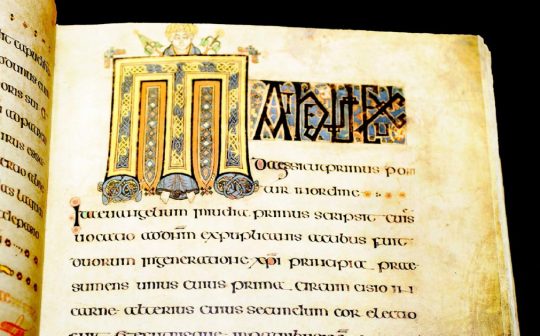
Over the centuries, from its earliest beginnings, Christianity was the inspiration for some truly stunning art. From early frescoes, to illuminated manuscripts , magnificent churches and abbeys, Christian art knew no bounds. And one such piece of art is the iconic and famed Book of Kells.
A historic heritage of early Christianity in Ireland, this magnificently illustrated gospel book is a clear glimpse into the unique art style and identity of the Gaelic peoples. Adorned with intricate details and a dazzling array of colors, this manuscript really shows the result of Christian tradition mixing with the art of the Gaels. And the result is truly stunning.
Dating from the 9th century AD, the manuscript luckily survived to the present day largely unscathed, and it withstood the wheel of time. Today we are bringing you the history of this marvelous art piece and getting you closer to the origins of Christianity in Ireland and the identity of the Gaelic nations. Join us!
Born From the Spirit: The Early Origins of the Book of Kells
When we consider early Christian art and illuminated gospels, there is hardly anyone who has not heard about the famed Book of Kells. Its reputation precedes it, and rightly so, as this is, to date, one of the finest and intricate pieces of illuminated gospels that we know of today. It is also the chief representation of the so called insular art style, and also its culmination.
Insular art refers to the unique form of art that originated on the islands of Ireland and Britain, and its name comes from Latin insula (island). Also known as Hiberno Saxon art, it flourished from 6th to 9th century AD. It is characterized by iconic features of Irish art which is today a chief part of Celtic Christianity, and its main features are truly stunning and complex knotwork interlace designs, La Tène Celtic art elements such as spirals, triskelions, knots, and symbols, Saxon animal motifs, and so on.
All of these elements of insular art are perfectly combined in the Book of Kells, making it a crowning representative of the style.
The exact origin and creation period of the Book of Kells is still largely debated, with several main versions existing. On the basis of the fully developed insular art style that encompasses all the features from the previous centuries, most scholars place the Book of Kells into the 9th century.
Now, the gospel itself is often brought into connection with Saint Columba, as being created by Columban monks, i.e. his followers. Saint Columba (orig. Irish - Colm Cille - “church dove”) died long before the 9th century, in 597 AD. He was an Irish missionary who is credited with successfully spreading Christianity among pagan Gaels and the Picts.
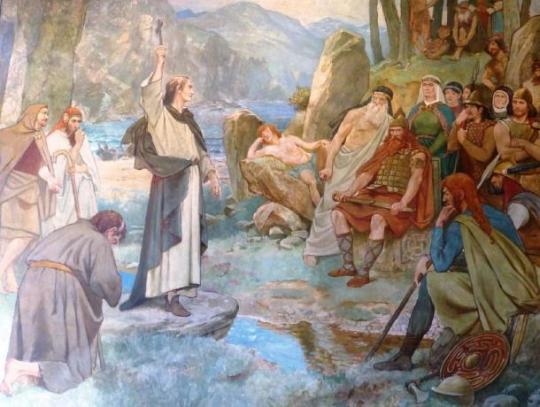
Saint Columba converting King Brude of the Picts to Christianity. (Kim Traynor / CC BY-SA 3.0 )
The original, old belief was that the Book of Kells was created during his lifetime, or even by Columba himself. But this tradition is usually dismissed on the basis of the complexity of the art style, which much more realistically belongs in the 9th century.
The other scholarly debate relates to the place of its creation. Most likely it was made on the island of Iona (Scottish: Ì Chaluim Chille ), a small island in the Scottish Inner Hebrides. The island is the site of the historic Iona Abbey and was the very center of Gaelic monasticism and the spread of Christianity for roughly three centuries. This was the place of the followers of Saint Columba, and if the Book of Kells was created there in the 9th century, it would coincide with the arrival of Vikings and the beginning of their raids.
Why is this important? Well, the manuscript is not called the Book of Iona, but the Book of Kells. Kells is a town in County Meath , Ireland, and the place of the Abbey of Kells.
Quite far from Iona, the abbey was created in the late 8th and early 9th centuries and was most likely a refuge for Iona monks who fled from the Viking raiders , bringing the Book of Kells with them. As the manuscript spent the longest period of time in this abbey, it was named the Book of Kells.
youtube
In summary, there are currently several proposed theories as to the origins of this manuscript. It is possible that it was created in the 8th century at Lindisfarne, and with the onset of Viking raids, was brought to Iona, and from there to Kells. It could have also been started at Iona and then finished at Kells.
But even at the Abbey of Kells, this magnificent manuscript was not entirely safe. In the 10th century, the place was repeatedly ransacked by Vikings, and at one point the manuscript was stolen. It was recovered later on, but not without loss – the gold and jewel adorned cover was not recovered. Even in that period, the worth and splendor of the manuscript was clear.
In the 1007 AD the Annals of Ulster , the book was named as the chief relic of the Western World . It then successfully survived in Kells and remained there until 1654. To preserve it from Oliver Cromwell’s troops, that arrived at the abbey in that year, the officials sent the book to Dublin, and from there it was given to Dublin’s Trinity College by the Bishop of Meath, in 1661. The Book of Kells remained there ever since.
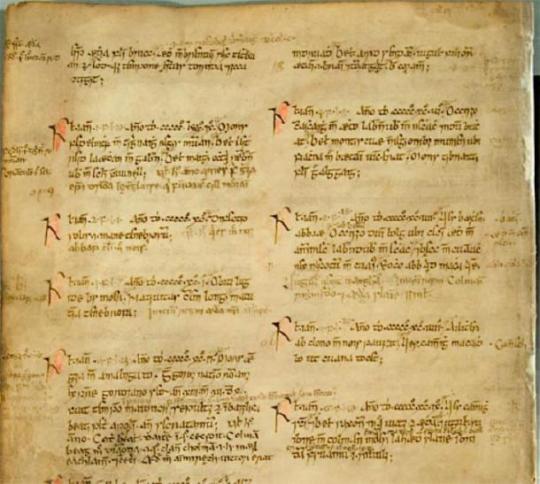
Spread the Word – Contents of the Manuscript
The Book of Kells consists of 340 sheets of fine vellum, which in turn totals 680 pages. It is comprised of the Four Gospels, and it is written in majuscule insular script, in yellow, red, purple, and black ink. The dimensions are 13 by 8.7 inches (330 by 220 millimeters), but these are the dimensions that resulted in a 19th century rebinding.

Interestingly, the Book of Kells seems to have never been finished. Several of the illuminations and decorations still remain only as outlines and were never filled and colored.
This ties in with the version that the manuscript’s completion was disturbed with the appearance of Viking raids. Either way, it is clear that this book was accomplished by a skilled team of monks in a scriptorium that was modern for its time, and that it most likely took them several years to accomplish.
It is written on a very fine vellum – aka animal skin or in this case the skin of a calf. It is thought that to produce the full Book of Kells, around 185 animals had to be killed to produce the vellum. Either way the quality is remarkable, although not all the pages are of same thickness – several are so fine that they are almost translucent.
The Book of Kells consists of preliminary writings and the Four Gospels – of Matthew, Luke, Mark, and John. The latter, Gospel of John, is incomplete, and goes only up to John 17:13 (And now come I to thee; and these things I speak in the world, that they might have my joy fulfilled in themselves.) The missing parts are generally attributed to the theft of the gold cover pages, which were torn off in the 10th century.
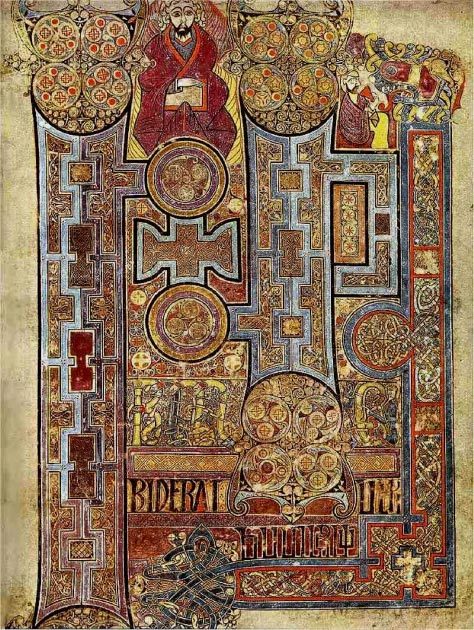
Of the preliminary writings, there are the Breves Causae (the Summaries of the Gospels), the Eusebian canons, and short biographies of the evangelists. All the writings are based from the Vulgate, a 4th century translation of the Bible into Latin. The Vulgate was completed by Saint Jerome in 384 AD.

The Book of Kells contains the symbols of the Four Evangelists (Clockwise from top left): a man (Matthew), a lion (Mark), an eagle (John), and an ox (Luke). (Magnus Manske / Public Domain )
As mentioned, there was a team of highly skilled scribes and artists from the abbey that worked on the book. All the big decorations were most likely produced by only three artists. There are subtle differences between each of the three, even though their names are unknown.
There were particular artists who did the major ornamental and interlaced knotwork designs such as the famous Chi Rho page. The stunning attention to detail and the mind dazzling intricacy of the woven lines is really amazing for the time period and is counted among the finest examples of Gaelic Celtic art.
The text was copied by four chief scribes. Slight differences can be observed through detailed studying of the writings, showing characteristic style shifts among the four.
It is observed that a particular scribe tended to repeat passages in order to fill up blank spaces on the page, as well as to use bright colors in the text itself. Another scribe did only the letters, avoiding decorations and leaving them to one of the artists.
Tedious Homework – Errors and Repetitions
An interesting glimpse into the trade network of the period can be seen from the many colors used in the Book of Kells. Most of these pigments had to be imported from abroad, often from quite far away, yet they still found their way to the small islands of Iona, Lindisfarne, and the Hebridean hermitages. The pigments were used for yellow, red, green, indigo, and blue.
Blue was made from woad, which was native to northern Europe, so that wasn’t such a problem to acquire. But the ochre for red and yellow, the verdigris green copper pigment, and lapis lazuli, all had to be imported from the Mediterranean. And in the case of ultramarine (lapis lazuli) it had to be acquired as far as Afghanistan.
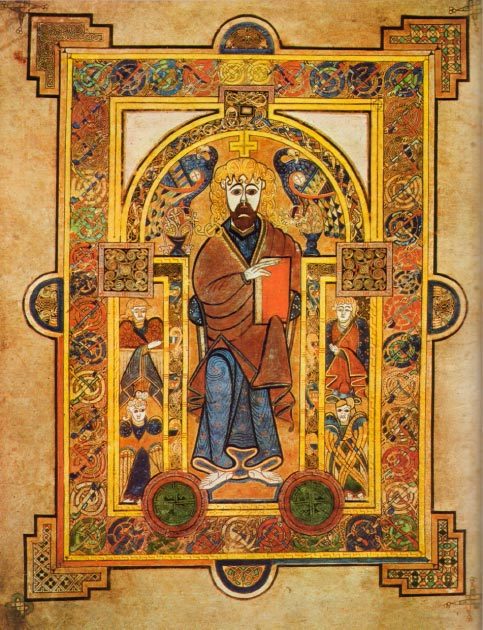
One surprising aspect of the Book of Kells is the seeming careless transcription, with numerous mistakes present throughout the manuscript. Granted, copying a manuscript takes a ton of concentration and dedicated effort, so mistakes can happen. Still, such a number of silly mistakes either tells us that the book had a more ceremonial use – not for daily use – or the Gaelic monks weren’t perfect masters of either the Latin language or insular script.
Words were skipped, pages repeated, and transcriptions wrong.
For example, the page 218 is a duplicate. It was clearly reproduced by mistake, but rather than discard it (it was a lot of hard work to produce even a single page) the monks chose to keep it in the book, nonetheless. The only thing that was done was the addition of numerous red crosses and red lines to indicate that the page should be ignored – as it was a mistake.
Also, there are plenty of errors in the text. A notable example is Matthew 10:34 (I came not to send peace, but a sword.) The original phrase in Latin should be: “Non veni pacem mittere, sed gladium.” But the scribe mixed gladium with gaudium, which means joy. Thus, the passage wrongly states: ”I came not to send peace, but joy.”
But in the end, the acceptance of such mistakes by the monks and the order tell us that it was really the aesthetics of the Book of Kells that were praised, rather than the written content itself. With almost all of the population at the time being illiterate, it was of no consequence that a word or two was wrongly written.
It was the grandiose look that had the purpose – to leave a lasting impression on the common folk, and to kindle belief in the hearts of the flock. And with the magnificent illustrations, with the mind boggling intricacy of the details, and the splendor of colors, we can safely assume that every common man of the time would be awestruck upon seeing the Book of Kells.
A Heritage to Last Centuries
Even though it is Christian in purpose and origin, the Book of Kells is still singlehandedly one of the most important insights into Irish and insular Gaelic art and culture. With numerous complex illustrations in this book, one certainly stands out. It is the page 34, with the full page illustration of the Chi Rho . Such an amazing level of detail, so many incredibly complex twists and interlaced designs, an abundance of La Tène Celtic art elements, bold colors, and endless depth, all tell us that the creation of even this single page could have taken many years.
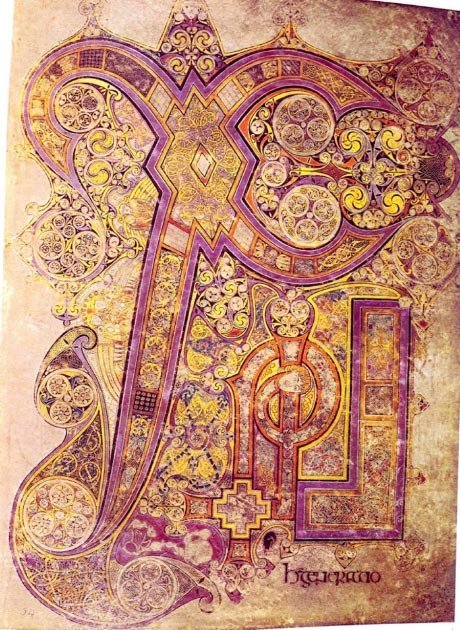
The Book of Kells contains the Chi Rho monogram. Chi and rho are the first two letters of the word Christ in Greek. (Soerfm / Public Domain )
And the whole of the Book of Kells was surely a product of much hard labor, dedication, and tedious transcription that was done by the monks. Those same monks who dedicated their lives to spiritual matters, and who so desperately yearned to secure their place in the imagined afterlife by carefully creating this immortal piece of Gaelic art.
12 notes
·
View notes
Photo



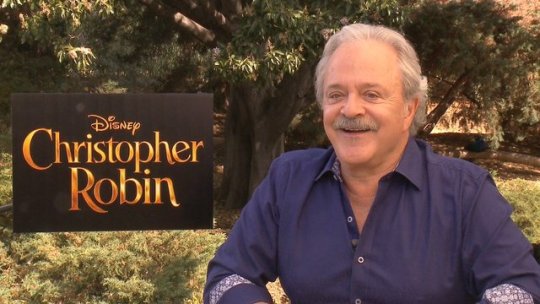
Your Fave Is Catholic: Jim Cummings
Known for: Beloved voice actor of cartoons, he is probably best known for being the current voice of both Winnie the Pooh & Tigger for Walt Disney since the 1980s. He initially started his career painting & repairing boats down in New Orleans, where he also had his own rock band called FUSION that was popular in the area. Later on, he started a career in voice acting, & the rest is history. Some of his other most iconic voice roles include Darkwing Duck, Pete (the bad guy from various Mickey Mouse cartoons), Tasmanian Devil of Looney Tunes, Dr. Robotnik in Sonic the Hedgehog (the Saturday morning cartoon, SatAM), Ed the Hyena from The Lion King, Fuzzy Lumpkins from The Powerpuff Girls, Monterey Jack from Chip & Dale: Rescue Rangers, Ray from The Princess & the Frog, Mr. Bumpy from Bump in the Night, Cat from CatDog, & so many many MANY more. To name a few other television cartoons he has lent his voice to, they include Disney’s Adventures of the Gummi Bears, Teenage Mutant Ninja Turtles, Talespin, Bonkers, Animaniacs, The Tick, Iron Man, Gargoyles, Earthworm Jim, Chalkzone, The Adventures of Jimmy Neutron: Boy Genius, Star Wars: the Clone Wars, OK K.O.! Let’s Be Heroes, & so much more. To name a few other films he has lent his voice to, they include Laputa: Castle in the Sky, Who Framed Roger Rabbit?, Aladdin, The Pagemaster, Pocahontas, A Goofy Movie, Balto, Hercules, Antz, Babe: Pig in the City, The Road to El Dorado, The Life & Adventures of Santa Claus, Shrek, Spirit: Stallion of the Cimarron, Gnomeo & Juliet, & many many more. Video games he has lent his voice to include Baldur’s Gate, Dragon Age: Origins, the Kingdom Hearts series, The Elder Scrolls: Skyrim, Epic Mickey, World of Warcraft: Mists of Pandaria, & many more. In short, he’s the guy who probably voiced some of your favorite cartoon characters growing up.
Evidence of Faith: According to an article from the Archdiocese of Baltimore discussing Jim’s successful career as a cartoon voice actor, it explains that growing up, Jim attended Immaculate Conception and St. Columba grade schools & the Ursuline High School, all of which are Catholic schools located in Youngstown, Ohio. The article also mentions that Jim is a member of the St. Jude Parish in Los Angeles to this day, indicating that he regularly attends Catholic mass.
#Catholic#celebrity#voice actor#Jim Cummings#cartoon#voice acting#television#film#movie#video games#Winnie the Pooh#Walt Disney
28 notes
·
View notes
Photo




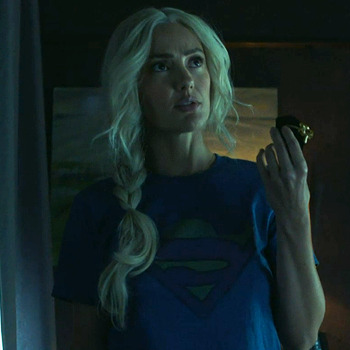




like/reblog or credit dccosmics on twitter if you save/use
24 notes
·
View notes